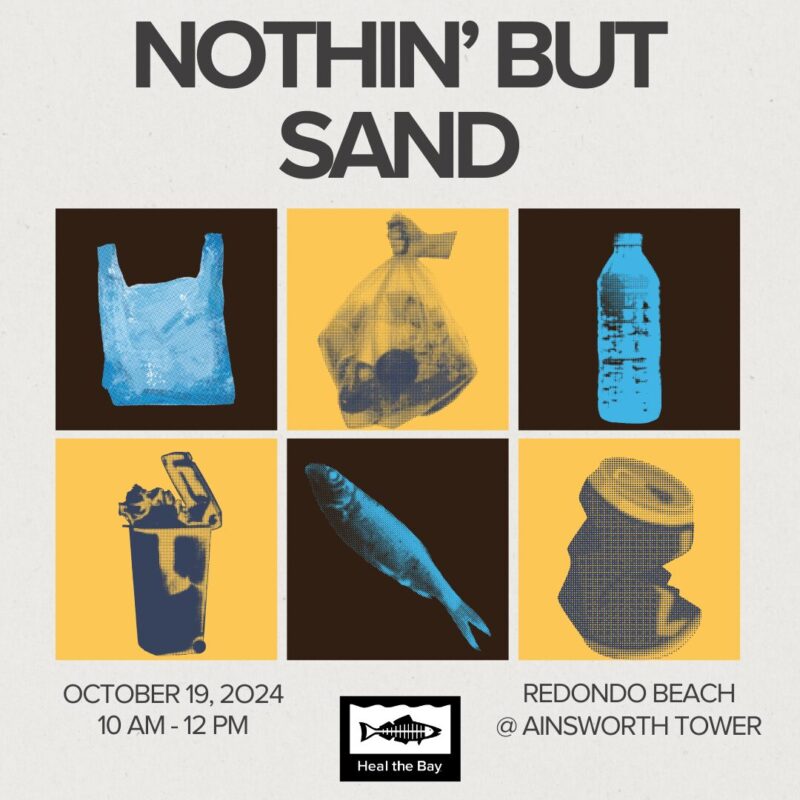Recycled Water Programs Taking Hold in L.A.
For the last four years I have been a member of the City of Los Angeles’s Recycled Water Advisory Group (affectionately known as “RWAG”). Led by the L.A. Department of Water and Power and L.A. Bureau of Sanitation, this diverse group of stakeholders from the government, business and nonprofit sectors keep tabs on the city’s efforts to increase water recycling.
Basically, we all want to avoid the downhill spiral that resulted from the toilet-to-tap debate in 2000, in which mayoral candidate Joel Wachs suggested that a DWP plan to recycle treated wastewater near Hansen Dam would result in Valley residents drinking “toilet water” in the future. The media coverage and public uproar eventually lead to the shuttering of the city’s recycling efforts for years.
RWAG didn’t get off to a great start. In fact, many groups were disillusioned early in the process when LADWP’s initial goal of producing at least an additional 50,000 acre-feet per year of recycled water by 2019 was suddenly pushed back to 2029. Now the goal that I hear most often is 59,000 acre-feet per year by 2035. Let’s stick to a goal and make it happen! (For some perspective, the city of L.A. uses about 621,000 acre feet of water each year, with an acre foot being about 326,000 gallons. So the new goal would result in recycling accounting for a little less than 10% of our water supply.)
However, reflecting on the last four years, there are significant signs of progress on the recycled water front.
In October 2012, LADWP adopted its Recycled Water Master Plan. This plan outlines plans for groundwater replenishment and non-potable reuse strategies within the city. Basically, these plans calls for highly treated wastewater from sewage plants to be pumped to other facilities that can supply it for irrigation and other uses other than drinking water. Other projects would replenish groundwater by pumping this treated wastewater — which meets all water quality standardss — back into the aquifer for further natural cleansing and use.
The advanced treatment pilot project that explored treatment technology effectiveness was completed at the Tillman wastewater treatment plant, and the draft EIR for the project is expected this fall. This is a big deal. However, the project is contingent on the construction of the San Fernando Basin Groundwater Treatment Complex and that costs big money ($600 million-$900 million, according to estimates given the L.A. City Council’s Energy and Environment Committee last week).
There are also non-potable reuse projects popping up around the city. For instance, the Harbor Refineries Pipeline Project will have 40,400 feet of recycled water piping that will convey recycled water to large industrial and irrigation customers by June 2014.
And this week the Los Angeles Regional Water Quality Control Board approved a permit amendment to allow the Water Replenishment District’s Alamitos Barrier project to move toward 100% recycled water. The Barrier project, located on the L.A.-Orange County border, uses 43 injections wells to prevent seawater intrusion into groundwater supplies and to replenish Los Angeles County’s Central Basin. The recycling program would save 3 million gallons per day of potable water, the equivalent of serving the needs of 7,000 homes.
LADWP’s Master Plan also concluded what many of us already knew — the city’s recycled water program is less expensive than the cost of purchased imported water from MWD over the long-term. As an example, the upcoming non-potable projects in Downtown and East Valley are estimated to have a unit cost of $220 and $560 per acre foot, respectively, whereas imported water is running at $890 per acre foot.
I believe we are ready for widespread recycled water use. Just look at our neighbors in Orange County who are replenishing their groundwater basin with 70 million gallons of treated effluent daily. An outreach study recently commissioned by LADWP found that the majority of residential and commercial customers support the concept behind the proposed groundwater replenishment. And 87% find that action needs to be taken to ensure L.A.’s water supply. Keep in mind that this was data collected before the Governor’s recent drought declaration, so these numbers likely will climb.
At our RWAG meeting last week we discussed finalizing the “RWAG Consensus Statement,” which outlines the group’s strong support of recycled water to augment the groundwater supply and keeps the door open to exploring direct potable reuse. Even that small move is a measure of how far we have come from the days of toilet-to-tap (which, by the way, is now called “showers to flowers”). With more widespread public acceptance and the increasing pressures on our water supply, it is all the more important that we ramp up these efforts and start exceeding the goals.



